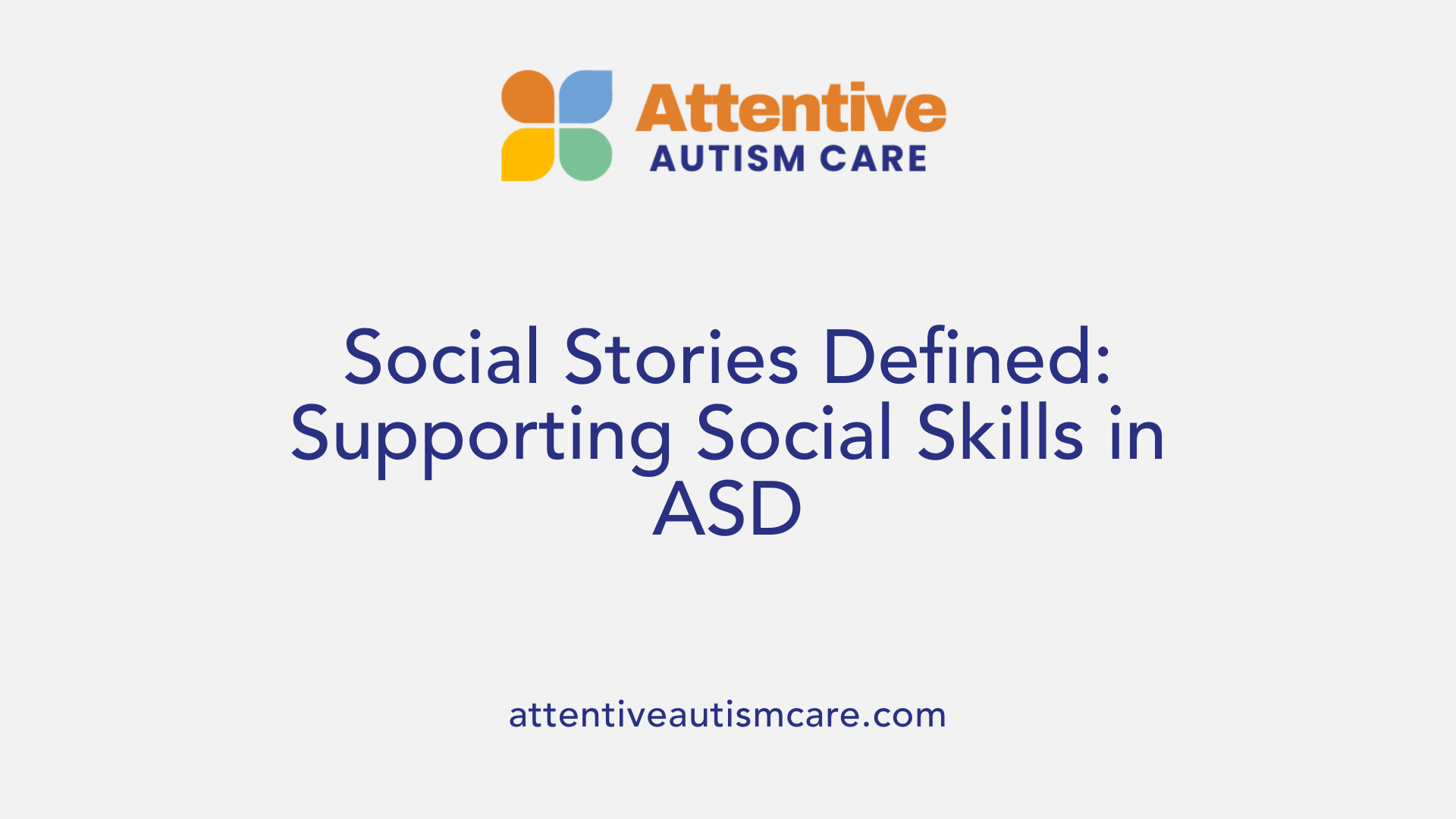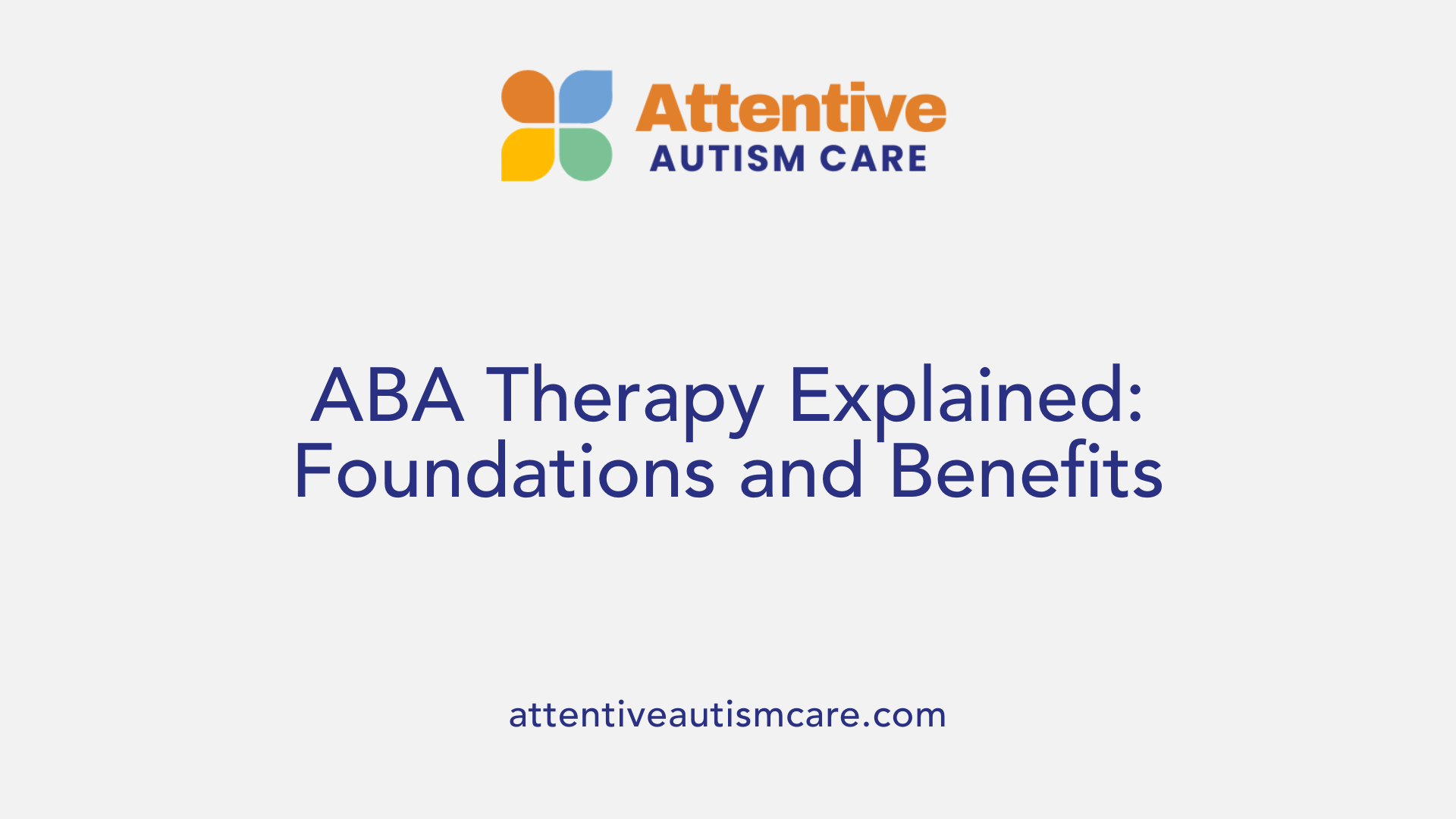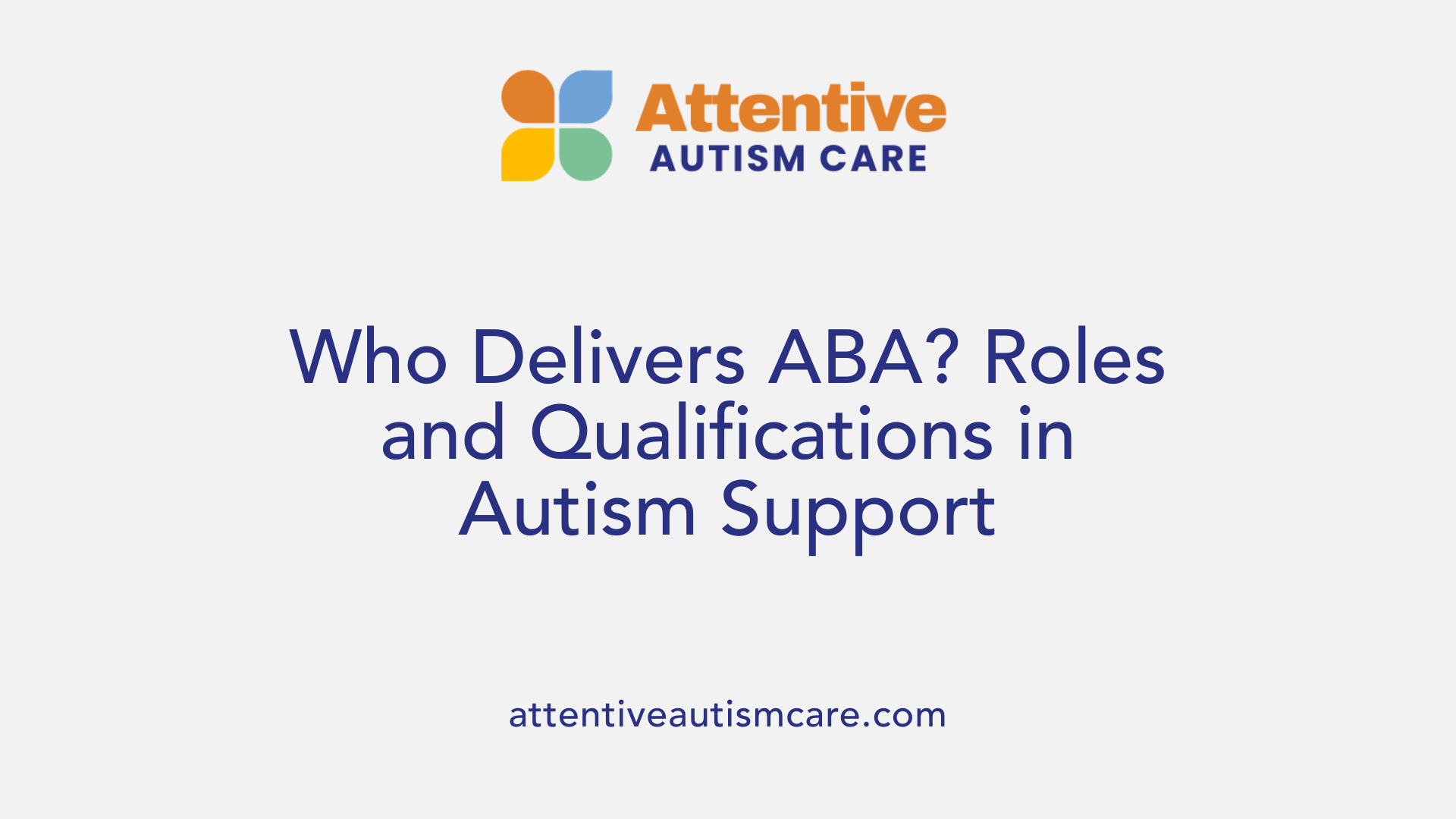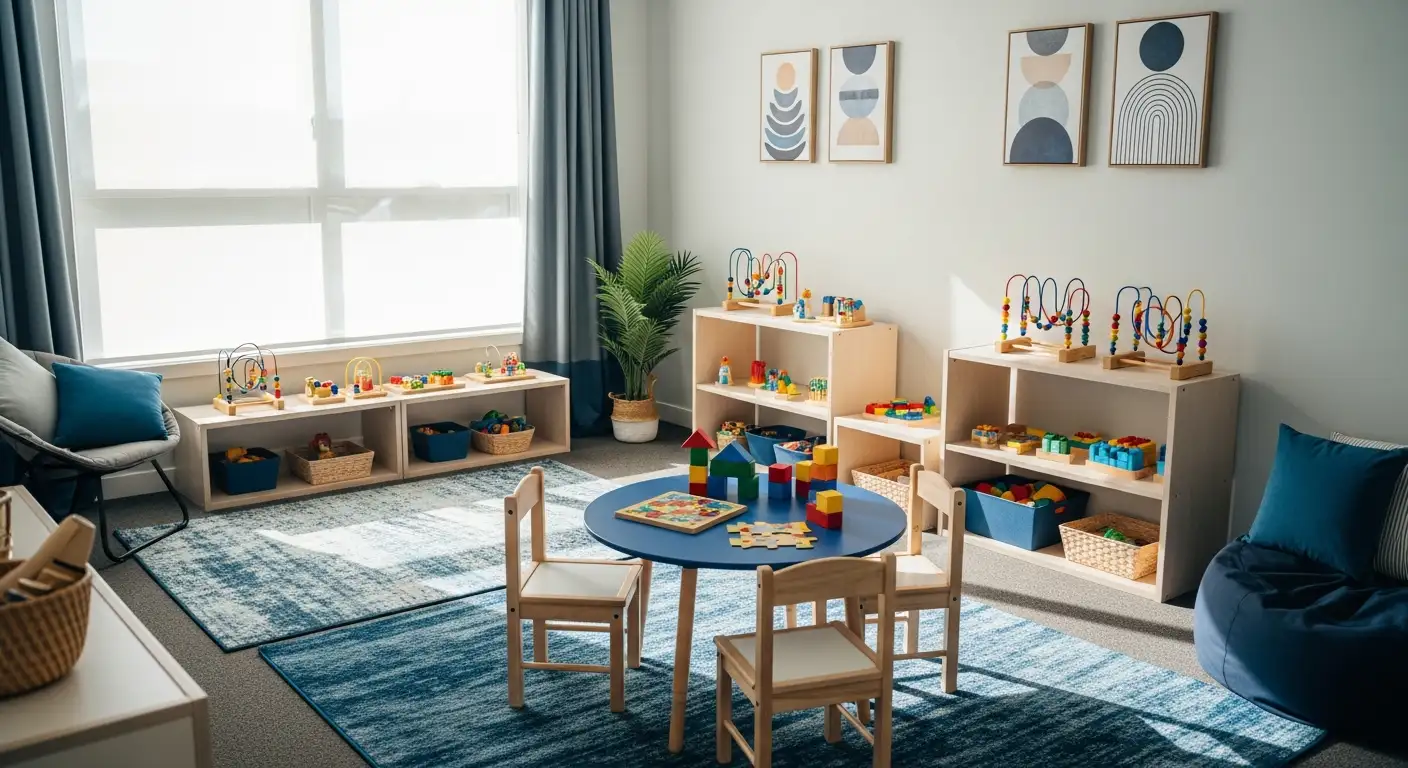The Role of Social Stories in Autism Education
Enhancing Social Understanding: How Social Stories Support Autism Education

Introduction to Social Stories and Autism Education
Social stories are an innovative educational tool designed to support individuals with Autism Spectrum Disorder (ASD) in understanding social cues, expectations, and appropriate behaviors. Since their development by Carol Gray in 1991, social stories have become a widely used intervention within autism education, helping children and adolescents navigate social situations with greater confidence and reduced anxiety. This article explores the nature of social stories, their role within autism education, their effectiveness, and how they relate to broader behavioral therapies such as Applied Behavior Analysis (ABA).
What Are Social Stories and Their Purpose in Autism Education?

Definition of Social Stories
Social stories are highly structured and individualized narratives designed to help individuals with Autism Spectrum Disorder (ASD) understand and navigate social situations. These stories explicitly describe social cues, expectations, and appropriate behaviors, serving as a guide to clarify often confusing social contexts.
Development by Carol Gray
The concept of social stories was developed by Carol Gray in 1991. Gray created this tool to support individuals with ASD by providing clear and concrete explanations of social interactions. Her approach involves tailoring each story to the specific needs and comprehension levels of the learner.
Goals of Social Narrative Intervention
The primary goal of social stories is to foster behavioral understanding. By explaining how and why certain behaviors are expected in specific situations, social stories aim to encourage long-term positive behavioral changes. They reduce anxiety by preparing individuals for common social settings and help improve social skills.
Targeted Social Cues and Behaviors
Social stories often focus on common environments such as supermarkets, clinics, and playgrounds. They highlight key social cues and expected actions within these settings, teaching individuals with ASD how to respond appropriately and manage social challenges effectively.
Individualization for Each ASD Learner
A critical strength of social stories is their flexibility. Each story is personalized to match the individual's interests, behavior goals, and comprehension ability. This individualization makes social stories highly acceptable and effective for diverse learners within the autism spectrum.
What is the role of social stories in autism education?
Social stories play a crucial role by providing explicit, structured scripts that help autistic individuals understand social contexts and expected behaviors. Developed by Carol Gray, they aim not only to improve social comprehension but also to reduce anxiety and facilitate behavioral regulation, making it an essential intervention in autism education.
Applied Behavior Analysis (ABA) Therapy: An Overview

What is Applied Behavior Analysis (ABA) therapy for autism?
Applied Behavior Analysis (ABA) therapy is a scientifically grounded treatment approach designed to assist individuals with autism spectrum disorder (ASD) in acquiring essential skills and decreasing harmful behaviors. Rooted in learning theory, ABA employs techniques such as positive reinforcement and functional behavior assessments to teach social communication, daily living, and academic abilities.
Individualization and settings
ABA programs are tailored to each person's unique needs, ensuring interventions address individual strengths and challenges. These programs span a variety of environments including home, school, and community settings, making them a versatile tool for real-life skill development.
Role of BCBA and professionals
The implementation of ABA is typically supervised by Board Certified Behavior Analysts (BCBAs), skilled professionals who design, monitor, and adjust treatment plans. They often collaborate with multidisciplinary teams comprising educators, speech therapists, and caregivers to optimize outcomes.
Early intervention benefits
Early and intensive ABA therapy has been shown to yield significant developmental progress in children with ASD. Prompt initiation is vital to capitalize on critical developmental windows for improved language, cognition, and social skills.
Focus on skill development and behavior change
ABA therapy prioritizes teaching functional skills that enhance independence and quality of life. It emphasizes reducing maladaptive behaviors by teaching alternative, appropriate responses, thus fostering positive behavioral changes that generalize across settings.
How ABA Therapy Supports Children with Autism

How does ABA therapy work to support children with autism?
ABA therapy uses a structured, science-based approach tailored to each child's unique needs. Professionals develop individualized programs that focus on teaching essential skills, from communication to social behaviors, while reducing any problematic actions.
Individualized program design
Each ABA program is carefully designed to meet the specific strengths and challenges of the child. This customization ensures that interventions are relevant and effective.
Techniques like discrete trial training and pivotal response treatment
ABA employs specific techniques such as discrete trial training, which breaks skills into small, teachable parts, and pivotal response treatment, which targets core areas to encourage broader improvements.
Use of positive reinforcement
Positive reinforcement is central in ABA therapy; desirable behaviors are rewarded to increase their frequency. This encourages the child to repeat those actions naturally.
Skill breakdown and repetition
Complex skills are broken down into manageable steps and practiced repeatedly to ensure mastery and generalization across different settings.
Data monitoring and adjustments
Throughout therapy, progress is closely tracked. Data collection allows professionals to assess effectiveness and tailor the program, making adjustments as needed for maximum benefit.
This personalized and evidence-based approach makes ABA therapy a powerful tool in supporting children with autism to improve communication, social skills, and daily living abilities.
Professionals Delivering ABA Therapy: Qualifications and Roles

Who provides ABA therapy and what qualifications do they have?
ABA therapy is provided by a team of professionals with specialized training in behavior analysis and autism intervention. The primary providers include Board Certified Behavior Analysts (BCBAs), Registered Behavior Technicians (RBTs), and licensed therapists.
BCBA role and certification
BCBAs hold advanced degrees and earn board certification by demonstrating expertise in applying behavior analysis to create individualized treatment plans. They conduct detailed assessments, design intervention strategies, supervise therapy delivery, and evaluate progress. Their certification is recognized as the standard for ensuring ABA therapy is evidence-based and effective.
Registered Behavior Technicians (RBTs)
RBTs work under the supervision of BCBAs. They receive focused training to implement behavior plans and interventions directly with clients. While RBTs do not design treatment, their applied skills in behavior modification make them essential to daily therapy sessions.
Licensed therapists' involvement
Licensed therapists such as psychologists, speech-language pathologists, or occupational therapists may collaborate in ABA programs, complementing behavioral goals with their expertise. They often contribute to assessment, goal development, and addressing co-occurring challenges.
Training and expertise in behavior analysis and autism
Professionals involved in ABA have educational backgrounds in psychology, special education, or related fields. They undergo specialized training and certification processes emphasizing autism spectrum disorder and applied behavior analysis principles.
Supervision and implementation
Implementation of ABA therapy relies on ongoing BCBA supervision to ensure fidelity to treatment plans and make data-driven adjustments. This collaborative approach optimizes outcomes and supports individualized client needs.
The combined expertise of BCBAs, RBTs, and licensed therapists ensures ABA therapy is delivered with professional rigor and tailored precisely to each individual's behavioral goals.
Potential Benefits of ABA Therapy for Individuals with Autism
What are the potential benefits of ABA therapy for individuals with autism?
Applied Behavior Analysis (ABA) therapy provides a range of benefits that are highly impactful for individuals with autism spectrum disorder (ASD). One of the primary advantages is improved communication and social skills. Through structured teaching and reinforcement, ABA helps develop language abilities and social interactions, enabling individuals to connect better with others.
Another significant benefit is the reduction of challenging or disruptive behaviors. ABA strategies focus on teaching alternative, appropriate behaviors to replace problematic ones, which can greatly enhance daily functioning.
ABA therapy supports greater independence and enhances the quality of life. By learning essential life and social skills, individuals become more capable of managing everyday tasks and participating in their communities.
The adaptability of ABA is another asset; it can be effectively administered across diverse environments including homes, schools, and other community settings. This flexibility helps tailor interventions to each person's unique needs and contexts.
ABA is widely recognized as an evidence-based treatment. Numerous studies and clinical practices endorse it as a foundational approach that supports meaningful developmental progress for individuals with autism.
These combined benefits make ABA therapy a comprehensive and effective intervention option that addresses both behavioral and developmental needs for those on the autism spectrum.
Addressing Criticisms and Limitations of ABA Therapy
Are there any criticisms or limitations of ABA therapy?
Applied Behavior Analysis (ABA) therapy has faced notable criticisms, especially regarding its historical practices. Early implementations sometimes relied on aversive interventions that are now widely discredited due to ethical concerns. This past rigor reflects how the field has evolved to prioritize the emotional well-being and dignity of individuals.
A frequent concern about ABA is its potential rigidity. Some critics argue that strict behavioral protocols may neglect the emotional and mental health of autistic individuals. This rigidity can inadvertently encourage masking — where autistic traits are suppressed to meet neurotypical standards — potentially undermining authentic self-expression.
However, modern ABA emphasizes positive reinforcement and personalized approaches. Individualized care ensures that therapy respects each person's unique needs and encourages flexibility rather than one-size-fits-all methods. This shift aims to balance behavioral improvements with fostering genuine emotional growth.
Ongoing debates underline the importance of social validity — the degree to which interventions are acceptable and meaningful to those receiving them and their families. To address limitations, therapists incorporate compassionate, respectful strategies that align closely with the preferences and goals of autistic individuals.
In summary, while ABA therapy has historically faced valid criticisms regarding its methods and impact on authenticity, contemporary practice has moved toward flexible, individualized care that seeks to empower rather than suppress autistic individuals.
Integration of Social Stories Within ABA and Autism Supports
Use of social stories as an intervention within behavioral frameworks
Social stories are a well-recognized tool employed within behavioral frameworks such as Applied Behavior Analysis (ABA) to assist individuals with Autism Spectrum Disorder (ASD). They provide highly structured and individualized scripts that describe social situations, appropriate behaviors, and their consequences. This approach aims to increase understanding and improve behavioral responses by explicitly teaching social cues and expectations.
Enhancing social skills and reducing maladaptive behaviors
Social stories contribute positively by enhancing social skills and reducing challenging or disruptive behaviors. Research demonstrates that this method fosters better comprehension of social contexts, which supports long-term behavioral change. It is particularly effective in increasing desirable social behaviors rather than solely focusing on eliminating maladaptive ones.
Complementing ABA with social stories
Within ABA therapy, social stories complement other evidence-based techniques by offering a personalized narrative approach. They can be combined with interventions like verbal prompting and visual schedules to reinforce targeted behaviors. This multimodal strategy helps address specific social communication impairments and restricted repetitive behaviors commonly observed in individuals with ASD.
Collaboration with professionals like psychologists and speech pathologists
The development and implementation of social stories often involve collaboration with professionals, including psychologists and speech-language pathologists. These experts contribute to tailoring stories according to individual needs, ensuring that the content aligns with therapeutic goals and enhances social understanding effectively.
Parental involvement in reinforcement
Parents play a vital role in reinforcing social stories, often reading and practicing these narratives with their children. This involvement makes social stories a practical, low-cost intervention accessible beyond clinical settings. Continuous parental support fosters consistency and helps generalize skills learned through social stories across various daily situations.
Flexibility and Individualization of Social Stories
Customization Based on Behavior Goals and Comprehension
Social stories are highly customizable tools designed to meet the unique behavior goals and comprehension levels of each individual with Autism Spectrum Disorder (ASD). This personal tailoring allows stories to specifically target particular social skills or behaviors that need development, enabling children and adolescents to better understand what is expected in various social contexts.
Adaptability to Different Ages and Cognitive Levels
These stories can be adapted to suit a wide age range, from young children to young adults, and can be adjusted for different cognitive abilities. This flexibility means that social stories remain relevant and effective across developmental stages, ensuring that the language and content are accessible and meaningful for each individual.
Inclusion of Visual Supports
Visual supports are often incorporated into social stories to enhance understanding and retention. Pictures, symbols, or simple drawings can cater to visual learning preferences and help individuals grasp complex social cues or sequences more effectively.
Tailoring Stories to Individual Needs for Better Acceptance
Because social stories are personalized—taking into account individual preferences, interests, and specific challenges—there is generally high acceptance among children with ASD. This individualization not only improves engagement but also increases the likelihood that the skills taught will translate into real-life social situations.
Examples of Settings and Social Scenarios Covered
Social stories cover a variety of common social settings and scenarios, including visits to supermarkets, clinics, playgrounds, schools, and other everyday environments. By providing clear expectations in these familiar contexts, they reduce anxiety and improve functional social skills.
This high degree of flexibility and individualization makes social stories an effective and widely accepted intervention, fitting seamlessly into the unique needs of those with ASD.
Effectiveness of Social Stories: Evidence and Research
What Do Systematic Reviews and Meta-Analyses Reveal About Social Stories?
Systematic reviews and meta-analyses focusing on randomized controlled trials (RCTs) have examined the efficacy of social stories (SS) in children and adolescents with Autism Spectrum Disorder (ASD). These comprehensive studies, analyzing data from numerous sources including PubMed and Cochrane Library, evaluate improvements in social communication, restricted and repetitive behaviors, and life skills. Reviews typically select studies conducted over the last decade to assess clinical effectiveness and practical outcomes.
Why Is There Mixed Evidence on Social Stories’ Effectiveness?
While many studies report that social stories can significantly improve social skills and reduce disruptive behaviors, the evidence is mixed. Variations in outcomes often depend on factors like intervention length, intensity, who delivers the intervention (teachers versus family members), and how behaviors are assessed. For example, interventions in school settings by trained professionals tend to show more consistent positive effects compared to family-led implementations.
How Do Social Stories Improve Targeted Behaviors?
Evidence indicates that social stories help improve social communication impairments and reduce restricted and repetitive behaviors by providing clear, individualized scripts about social situations. The goal is to enhance understanding of social cues and expected behaviors, aiding children with ASD to respond appropriately. Success is often greater when stories focus on implementing or increasing positive behaviors rather than simply eliminating negative ones.
What Factors Influence the Success of Social Stories?
Several success factors have emerged from research:
- Intervention Length and Intensity: Longer and well-structured use tends to promote better outcomes.
- Training: Standardized training for educators and support staff enhances consistency and effectiveness.
- Individualization: Tailoring stories to fit the unique needs and comprehension levels of each child is critical.
- Visual Supports: Incorporating visual aids helps reinforce learning.
How Do Social Stories Compare With Other Interventions?
Comparative studies suggest that while social stories are valuable, they may be less effective on their own than some other methods like video modeling or photographic sequences. However, social stories maintain advantages in personalization and ease of use. Their effectiveness improves when combined with other evidence-based practices such as verbal prompting or visual schedules, highlighting their role as a complementary tool within a comprehensive intervention plan.
Age Groups and Settings Optimizing Social Story Outcomes
Greater positive effects in children and preadolescents
Research shows that social stories tend to yield the most significant improvements in social skills and behavior among children and preadolescents with ASD. This age group appears particularly receptive to the individualized and structured approach that social stories provide, making early intervention critical for maximizing benefits.
Role of school environments and educators
School settings have demonstrated more favorable outcomes when social stories are applied. Teachers and educational staff often have the training and daily access needed to implement these stories consistently, facilitating improvements in social communication and reducing disruptive behavior.
Support professionals as effective implementers
Support professionals such as speech pathologists and psychologists also play a vital role in delivering social stories effectively. Their expertise allows for tailoring stories to individual needs while reinforcing behavioral goals, which enhances the intervention's impact.
Less favorable outcomes in family or informal settings
In contrast, the use of social stories within family or informal environments shows mixed or less consistent results. The variability in training and implementation fidelity among caregivers may contribute to these outcomes, highlighting challenges in less structured settings.
Importance of standardized educator training
The review underscores the need for standardized training for educators and support personnel to ensure social stories are delivered effectively. Training improves consistency, makes implementation easier, and ultimately enhances social story efficacy for children with ASD in educational settings.
Social Validity and Acceptance of Social Stories
Perceptions by families and professionals
Social stories are widely regarded as a beneficial intervention by both families and professionals involved in supporting individuals with Autism Spectrum Disorder (ASD). They are seen as useful tools that explain social situations and help children develop appropriate responses, fostering more effective social understanding and behavior.
Ease of use and emotional satisfaction
One of the reasons social stories are highly accepted is due to their ease of use. Families and educators often report that these individualized scripts are straightforward to implement and adapt. The emotional satisfaction derived from witnessing positive behavioral changes reinforces their continued use.
Low-cost and accessible intervention
Social stories offer a practical and low-cost intervention option. Since parents and caregivers can be actively involved in reading and reinforcing these stories, the method becomes accessible beyond clinical or educational settings. This enhances its feasibility as an ongoing support strategy.
Social acceptability within special education
Social stories have gained formal endorsement within special education practices, supported by empirical research evidence. This acceptance in professional circles further contributes to their credibility and routine use in school and therapy environments.
Implications for sustained implementation
The combination of high social validity, simplicity, low cost, and professional acceptance supports the sustained implementation of social stories. Ensuring educators receive standardized training on their effective application can further improve consistency and long-term success, making social stories a socially valid and widely accepted approach in autism intervention.
Strengths and Limitations of Social Stories as an Intervention
How effective are social stories in increasing versus eliminating behaviors?
Research shows social stories tend to be more effective when the intervention's goal is to implement or increase appropriate social behaviors rather than to eliminate disruptive ones. They provide clear guidance about what to do in specific social situations, which helps individuals with ASD learn and adopt new behaviors more consistently than simply suppressing unwanted ones.
What role do visual supports and training play in social stories' success?
Incorporating visual supports alongside social stories enhances comprehension and retention of the material for many children with ASD. Additionally, standardized training for educators and support staff on how to develop and deliver social stories significantly improves their effectiveness and consistency across different settings.
How do social stories compare to other intervention strategies?
Comparative studies indicate that while social stories are valuable as personalized tools, they may be less effective than other methods like video modeling or photographic sequence interventions when used alone. Nonetheless, their flexibility and adaptability make them a practical option, especially when combined with other evidence-based practices.
Why are social stories considered useful as individualized and flexible tools?
Social stories can be tailored to each individual's unique needs, comprehension level, and behavior goals. This flexibility contributes to high acceptance among children, families, and educators. Their personalized nature allows the stories to address specific situations and challenges the individual faces, increasing relevance and engagement.
What are recommendations for integrating social stories with other interventions?
Experts suggest that social stories achieve the best outcomes when integrated with complementary strategies such as verbal prompting and visual schedules. Collaborative involvement from professionals, educators, and caregivers in customizing and reinforcing the stories further enhances their impact, providing a comprehensive support system for the individual.
Practical Implementation: Collaboration and Parental Engagement
Use alongside other therapies
Social stories are often most effective when combined with other evidence-based practices. For example, pairing social stories with verbal prompting or visual schedules can enhance their impact on social understanding and behavior modification in children with ASD. This integrative approach supports a comprehensive intervention plan tailored to each child's unique needs.
Role of psychologists, speech pathologists, educators
Implementing social stories successfully requires collaboration among various professionals. Psychologists and speech pathologists contribute expertise in customizing story content and delivery methods to optimize comprehension and engagement. Educators and support professionals, especially in school settings, play a vital role by applying social stories consistently during social situations, increasing the chances of positive behavioral outcomes.
Parental reading and reinforcement at home
Parents are central to the practical use of social stories. They often take on the responsibility of reading and reinforcing these stories at home, helping generalize the learned behaviors beyond therapy or school environments. This parental involvement encourages emotional connection with the material and makes social stories a routine part of the child's daily life.
Practicality as a low-cost intervention
Social stories are particularly valued as an accessible, low-cost tool. Their flexibility allows customization without requiring extensive resources or specialized materials. This practicality makes them feasible for families and educators to implement regularly without significant financial burden.
Timing and appropriate contexts for story use
The effectiveness of social stories increases when used at appropriate times and in relevant social contexts. Tailoring the timing to anticipate social situations, such as visits to a supermarket or school transitions, helps prepare children emotionally and cognitively, reducing anxiety and improving their responses.
Together, these collaborative efforts and mindful implementation strategies foster a supportive environment where social stories can promote meaningful social learning and behavior improvement in children with ASD.
Future Directions and Recommendations for Social Stories in Autism Education
Importance of standardized training for educators
Standardized training for educators and support professionals is crucial to enhance the effectiveness and consistency of social stories (SS) as interventions. Proper training equips them with skills to tailor stories to individual needs and to deliver interventions optimally, especially in school settings where better outcomes have been noted.
Need for further robust research with RCTs
Despite positive findings, evidence from randomized controlled trials (RCTs) remains mixed concerning SS effectiveness. Future research should focus on rigorous RCTs to clarify outcomes related to social communication, repetitive behaviors, and life skills improvements in children with Autism Spectrum Disorder (ASD).
Exploration of economic feasibility and intervention factors
Further investigation is needed into the economic feasibility and intervention characteristics such as length, intensity, and delivery setting. Understanding these variables will help optimize resource allocation and maximize benefits for individuals with ASD and their families.
Emphasis on individualized, strength-based approaches
Individualization remains a cornerstone for SS success, supporting behavioral strengthening rather than elimination. Future directions should highlight tailoring interventions to unique behavior goals, comprehension levels, and incorporating visual supports to harness individual strengths.
Potential for combining with other evidence-based practices
The combination of social stories with methods like verbal prompting or visual schedules shows promise in increasing positive social behaviors. Continued exploration of integrative approaches will likely enhance the overall impact of interventions on social skill development and behavior modification for children and adolescents with ASD.
Conclusion: The Vital Role of Social Stories in Autism Education
Social stories remain a valuable and widely recognized tool in autism education, offering a flexible, individualized method to improve social understanding and appropriate behaviors in individuals with ASD. Though evidence varies, research underscores their particular benefit for children and preadolescents, especially when implemented in school settings by trained professionals and combined with other supportive interventions like ABA. Their social validity, accessibility, and adaptability make them a practical resource for families and educators alike. As autism education continues to evolve, enhancing training, research, and integration of social stories will be essential to maximize their positive impact on the lives of autistic individuals.
References
- Effects of social stories intervention for children and ...
- The Effectiveness of Social stories as Behavior Intervention for ...
- Effectiveness of social stories in intervention in autistic sp
- Social stories and autism
- Applied Behavior Analysis (ABA)
- The Controversy Around ABA
- Concerns About ABA-Based Intervention: An Evaluation and ...
- Is ABA therapy harmful? The controversy explained
- Applied Behavior Analysis (ABA)
- Applied Behavior Analysis (ABA)



































































































